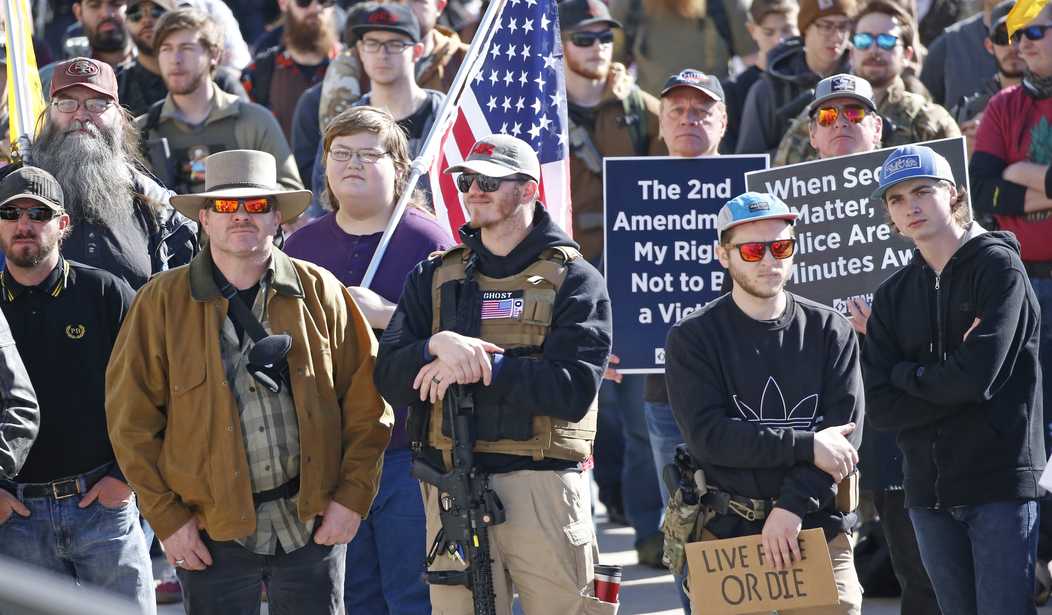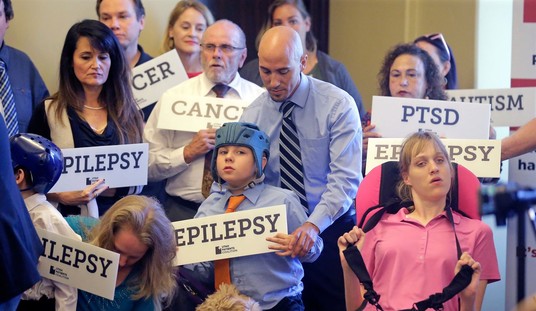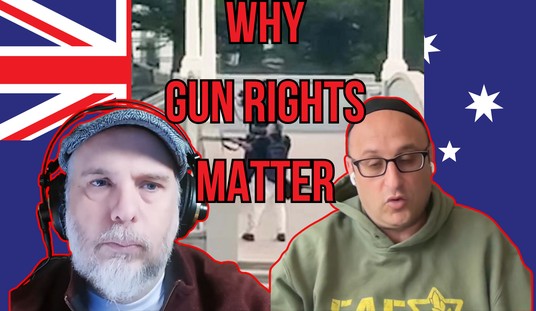Historian Saul Cornell has long argued that the Second Amendment doesn’t actually protect an individual right to keep and bear arms. Instead, the Fordham University history professor views the amendment as neither a collective right nor an individual right but a civic right; “an obligation citizens owed to the state to arm themselves so that they could participate in a well regulated militia,” as one of the blurbs of his books puts it. In other words, he thinks the Supreme Court got it wrong in Heller.
Now Cornell is out with a new piece in the Washington Post arguing that today’s Second Amendment supporters have advanced a “radical vision” of the right to keep and bear arms and, “conflating history and mythology, have invented a cluster of rights around it.”
They have successfully pushed the notion that the right to bear arms and the right to peaceably assemble, added together, equal some sort of supersized right to armed assembly. For them, the idea that exercising their Second Amendment rights could infringe on any other cherished liberties is unthinkable. How could exercising two constitutional rights together possibly make a constitutional wrong?
It could. That’s because the founding generation viewed a right of armed assembly as the legal definition of a riot. Modern Americans obsess about the right to bear arms, but in that earlier generation, there was at least as much concern about the now-forgotten right not to bear arms, a form of freedom viewed as equally worthy of preserving. Above all, the authors of the Second Amendment believed that the preservation of the peace and freedom from armed intimidation was essential to civil society and the key to protecting well-regulated liberty.
I wish Cornell would have offered some specific evidence that the Founders viewed any political gathering in which some attendees were armed as a riot, but apparently we’re just supposed to take his word at it. As for his weird argument about the right to not bear arms (which is pretty much undisputed among every gun owner I know), Cornell offers up this little nugget of historical revisionism.
Most of the first state constitutions did not have a provision protecting the right to bear arms. In those few instances in which such a right was singled out for express protection, it was considered as important to preserve a right not to bear arms. The Pennsylvania Declaration of Rights (1776), the first state Constitution to protect a right to bear arms, also affirmed that no person “who is conscientiously scrupulous of bearing arms” could “be justly compelled thereto, if he will pay such equivalent.”
Government could compel citizens to bear arms unless they had religious objections. No other right in the first state constitutions was so completely bound up with a specific legal obligation and duty. Indeed, the Pennsylvania provision made clear that even if a man had religious scruples about bearing arms, he still had to contribute something to public defense.
Modern rights typically impose obligations on others, including government; they do not typically impose obligations on those who claim the rights. The libertarian vision of gun rights, a right that not only trumps all others but imposes no obligations on its holders, would have been inconceivable to the authors’ of the Second Amendment.
Let’s address Cornell’s claims one by one. It’s true that not every state in the Union chose to explicitly protect the right to keep and bear arms in its original state constitution, though several states did so long before the Bill of Rights was ever even considered. Take the Pennsylvania Declaration of Rights that Cornell mentions above. The section of the document that Cornell cites doesn’t actually appear in the section dealing with the right to keep and bear arms. Instead, it appears in portion that speaks specifically to the obligations of citizens in defending life, liberty, and property.
That every member of society hath a right to be protected in the enjoyment of life, liberty and property, and therefore is bound to contribute his proportion towards the expence of that protection, and yield his personal service when necessary, or an equivalent thereto: But no part of a man’s property can be justly taken from him, or applied to public uses, without his own consent, or that of his legal representatives: Nor can any man who is conscientiously scrupulous of bearing arms, be justly compelled thereto, if he will pay such equivalent, nor are the people bound by any laws, but such as they have in like manner assented to, for their common good.
In other words, the right to not bear arms for collective defense of the state did exist, but you had to pony up some cash in exchange for your lack of service.
Five paragraphs later the Declaration of Rights addresses the right to keep and bear arms.
That the people have a right to bear arms for the defense of themselves and the state; and as standing armies in the time of peace are dangerous to liberty, they ought not to be kept up; And that the military should be kept under strict subordination to, and governed by, the civil power.
In defense of themselves and the state. So the right is not just contingent on service in a militia. In fact, presumably under the Pennsylvania Declaration of Rights one would have had the liberty to pay to avoid taking part in militia service while still maintaining their right to bear arms.
Cornell next argues that “today’s vision of gun anarchy ” doesn’t have much in common with “the vision of James Madison and the members of the First Congress who actually wrote the Second Amendment.”
“The insurgents who continue to march armed in American streets — with their imagined right to armed assembly — are properly seen as the heirs to Daniel Shays, the leader of the armed uprising in western Massachusetts that frightened the framers of the Constitution and led Americans to abandon the failed Articles of Confederation.”
Federalist 46, which Madison wrote in defense of ratification of the Constitution, specifically speaks to the right of the people to be armed, which he viewed as an advantage and a protection against tyranny not afforded to the peoples of European nations. So, yeah, I’d argue that Madison was closer to my view of the Second Amendment than, say, Joe Biden.
As for Shays’ Rebellion, it simply wasn’t about “armed assembly,” as Cornell suggests. It was a series of direct actions, including the forcible shutting down of courts in the western part of the state by crowds of “Shaysites”. That particular action led to eleven individuals being indicted for being “”disorderly, riotous, and seditious persons.” Shortly after that indictment, the Shaysites decided to attack the federal armory at Springfield.
There’s an obvious difference between a peaceful protest that involves gun owners exercising their Second Amendment rights and a riotous mob shutting down courts, attacking a federal armory, trying to burn down a federal courthouse in Portland, or storming the U.S. Capitol, but Cornell won’t acknowledge it.
It’s also worth noting that, of the 4,000 individuals who signed a confession acknowledging their participation in Shays’ Rebellion, only 18 were convicted and just two were put to death (and they had both been convicted of the separate offense of looting). Even Daniel Shays himself was pardoned the year after he led the revolt over the collection of taxes on mostly poor, rural farmers. Shays died, his rights fully restored, in Connecticut in 1825, seven years after lawmakers in the state revised the state constitution to include the following phrase – Every citizen has a right to bear arms in defense of himself and the state.
By the way, this is just a spur of the moment response to Cornell, so apologies for the admittedly incomplete response to every one of his arguments. I really wish a) I had more time to devote to research on this, and b) the Washington Post would offer space to someone like Dave Kopel to respond to Cornell’s assertions.









Join the conversation as a VIP Member